Tennessee, located in the southeastern region of the United States, is a state known for its stunning natural beauty, rich musical heritage, and vibrant culture. With its picturesque countryside, bustling urban centers, and charming small towns, Tennessee offers an exciting blend of nature and culture. To help visitors and residents navigate this beautiful state, we have created a detailed map of Tennessee with cities and highways.
This map highlights Tennessee’s major cities, including Nashville, Memphis, Knoxville, and Chattanooga, as well as its primary highways and roads. Whether you’re planning a road trip or simply want to explore Tennessee’s unique landscape and culture, this map is an essential tool. So, grab your map and get ready to discover all that Tennessee has to offer, from its world-renowned music scene to its stunning national parks and everything in between.
Printable Tennessee Map With Cities and Highways

Cities
Athens
Athens is a city located in McMinn County, Tennessee, United States, and serves as the county seat. With a population of 14,084 as of the 2020 census, Athens is a relatively small city, but it is the principal city of the Athens Micropolitan Statistical Area, which has a population of 53,569.
The city is situated almost equidistant between Knoxville and Chattanooga, two major cities in Tennessee. The population of the zip code area is 23,726, making Athens a significant hub in the region. Despite its small size, Athens has a rich history and culture, with numerous museums, parks, and festivals that attract visitors from all over the world.
Bartlett
Bartlett is a city located in Shelby County, Tennessee, United States. As of the 2020 U.S. Census, the population of Bartlett was 57,786, making it one of the largest cities in the state. Bartlett is known for its excellent schools, strong economy, and high quality of life. The city is home to numerous parks, recreational facilities, and cultural attractions, including the Bartlett Performing Arts and Conference Center.
Bartlett is also conveniently located near Memphis, one of the largest cities in Tennessee, making it an ideal place to live for those who want access to big-city amenities while still enjoying the benefits of a smaller community. Overall, Bartlett is a vibrant and thriving city that offers something for everyone.
Brentwood
Brentwood is a city located in Williamson County, Tennessee, United States. As of the 2020 United States census, the population of Brentwood was 45,373, making it one of the larger suburbs of Nashville. Brentwood is known for its high quality of life, excellent schools, and strong economy.
The city is home to numerous parks, recreational facilities, and cultural attractions, including the historic Ravenswood Mansion and the Brentwood Library. Brentwood is also conveniently located near Nashville, one of the largest cities in Tennessee, making it an ideal place to live for those who want access to modern amenities while still enjoying the joys of a smaller community. Overall, Brentwood is a bustling and prosperous city that provides a great quality of life for its residents.
Bristol

Bristol is a city located in Sullivan County, Tennessee, United States. As of the 2020 census, the population of Bristol was 27,147. Bristol is unique in that it is a twin city with Bristol, Virginia, with the state line running along State Street in their common downtown district.
Bristol is a principal city in the Kingsport–Bristol metropolitan area, which had a population of 307,614 in 2020, and is a component of the larger Tri-Cities region of Tennessee and Virginia, with a population of 508,260 in 2020. Bristol is also known for its rich musical heritage, having been recognized by the U.S. Congress as the “Birthplace of Country Music” in 1998.
The Birthplace of Country Music Museum is located in Bristol, and the city was the site of some of the earliest commercial recordings of country music, featuring Jimmie Rodgers and the Carter Family. Bristol is also the birthplace of Tennessee Ernie Ford. In addition to its musical heritage, Bristol is home to Bristol Motor Speedway, a NASCAR short track, and the world’s fifth-largest coal producer, Contura Energy, is based in Bristol.
Brownsville

Brownsville is a city located in Haywood County, Tennessee, United States, and serves as the county seat. As of the 2020 census, the population of Brownsville was 9,788. The city is named after General Jacob Jennings Brown, an American officer of the War of 1812.
Brownsville is a historic city with a rich cultural heritage, and it is home to numerous museums, parks, and cultural attractions. The West Tennessee Delta Heritage Center, the Haywood County Museum, and the Sleepy John Estes House are just a few of the many places where visitors can learn about the city’s history and culture.
Brownsville is also known for its excellent schools, strong economy, and high quality of life. Overall, Brownsville is a wonderful place to live, work, and visit, and it is a great representation of the rich cultural heritage and natural beauty of Tennessee.
Chattanooga
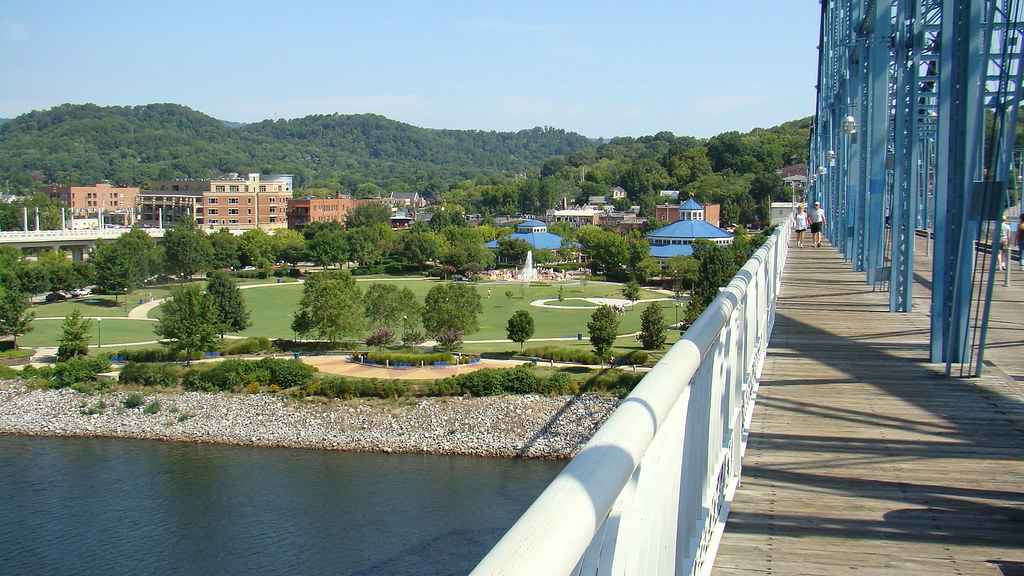
Chattanooga is a city located in Hamilton County, Tennessee, United States, and serves as the county seat. With a population of 181,099 as of 2020, it is the fourth-largest city in Tennessee and one of the two principal cities of East Tennessee, along with Knoxville. Chattanooga is located along the Tennessee River and borders Georgia to the south.
The city is known for its rich history, having played a crucial role during the American Civil War due to the multiple railroads that converge there. After the war, the railroads allowed the city to grow into one of the Southeastern United States’ largest heavy industrial hubs. Today, major industries that drive the economy include automotive, advanced manufacturing, food and beverage production, healthcare, insurance, tourism, and back office and corporate headquarters.
Chattanooga remains a transit hub, served by multiple Interstate highways and railroad lines. The city is also known for its scenic beauty, with surrounding mountains, ridges, and valleys. Chattanooga is home to the University of Tennessee at Chattanooga and Chattanooga State Community College and is internationally known for the 1941 hit song “Chattanooga Choo Choo” by Glenn Miller and his orchestra.
Clarksville

Clarksville is a city located in Montgomery County, Tennessee, United States, and serves as the county seat. With a population of 166,722 as of the 2020 United States census, it is the fifth-largest city in the state, after Nashville, Memphis, Knoxville, and Chattanooga. Clarksville is the principal central city of the Clarksville metropolitan area, which includes Montgomery and Stewart counties in Tennessee and Christian and Trigg counties in Kentucky.
The city was founded in 1785 and named for General George Rogers Clark, a frontier fighter and Revolutionary War hero, and brother of William Clark of the Lewis and Clark Expedition. Clarksville is home to Austin Peay State University, The Leaf-Chronicle, the oldest newspaper in Tennessee, and is neighbor to the Fort Campbell, United States Army post.
The site of the 101st Airborne Division (Air Assault), Fort Campbell is located about 10 miles from downtown Clarksville and straddles the Tennessee-Kentucky state line. Overall, Clarksville is a thriving and growing city that offers a great quality of life for its residents.
Cleveland
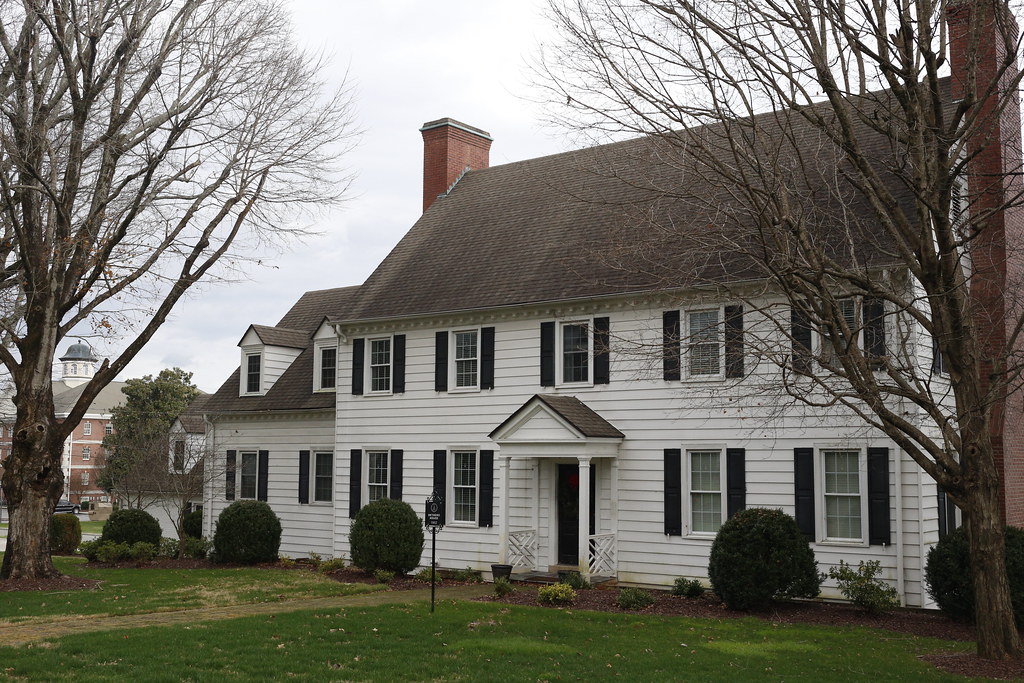
Cleveland is a city located in Bradley County, Tennessee, United States, and serves as the county seat. With a population of 47,356 as of the 2020 census, it is the largest city in Bradley County. Cleveland is the principal city of the Cleveland metropolitan area, which includes Bradley and neighboring Polk County, and is included in the Chattanooga–Cleveland–Dalton, TN–GA–AL Combined Statistical Area.
Cleveland is known for its strong industrial economy, with thirteen Fortune 500 manufacturers, making it the fifth-largest industrial economy in Tennessee. The city is also home to numerous parks, recreational facilities, and cultural attractions, including the Museum Center at 5ive Points and the Cleveland State Community College. Overall, Cleveland is a bustling and prosperous city that offers a great standard of living for its residents and visitors alike.
Columbia

Columbia is a city located in Maury County, Tennessee, United States, and serves as the county seat. With a population of 41,690 as of the 2020 United States census, Columbia is included in the Nashville metropolitan area. The city is known for its rich history and cultural heritage, with numerous antebellum homes and historic sites.
Columbia celebrates its designation as the “Antebellum Homes Capital of Tennessee” and has more antebellum houses than any other county in the state. The city also celebrates Mule Day each April, a festival that celebrates the city’s self-proclaimed title as the “mule capital of the world.”
Columbia is also home to one of the last two surviving residences of James Knox Polk, the 11th President of the United States; the other is the White House. Overall, Columbia is a charming and historic city that offers a glimpse into Tennessee’s rich cultural heritage.
Cookeville

Cookeville is a city located in Putnam County, Tennessee, United States, and serves as the county seat. With a population of 34,842 as of the 2020 United States census, Cookeville is recognized as one of the country’s micropolitan areas, or smaller cities that function as significant regional economic hubs.
Of the twenty micropolitan areas in Tennessee, Cookeville is the largest. The Cookeville micropolitan area’s 2010 Census population was 106,042, and the U.S. Census Bureau ranked the Cookeville micropolitan area as the 7th largest-gaining micropolitan area in the country between 2018 and 2019, with a one-year gain of 1,796 and a 2019 population of 114,272.
Cookeville is also a college town, home to Tennessee Tech, which contributes to the city’s vibrant and diverse culture. Overall, Cookeville is a robust and exciting city that offers so much to its residents and is a significant economic hub in the region.
Dickson

Dickson is a city located in Dickson County, Tennessee, United States, and is part of the Nashville metropolitan area. With a population of 16,058 as of the 2020 census, Dickson is a small but growing city that offers a great quality of life for its residents. The city is known for its beautiful natural surroundings, with numerous parks, lakes, and outdoor recreational opportunities.
Dickson is also home to a vibrant downtown area, with a variety of shops, restaurants, and cultural attractions. The city celebrates its rich history and cultural heritage, with numerous historic sites and landmarks. Overall, Dickson is a charming and welcoming city that provides a wonderful mix of small-town charm and big-city amenities.
Dyersburg
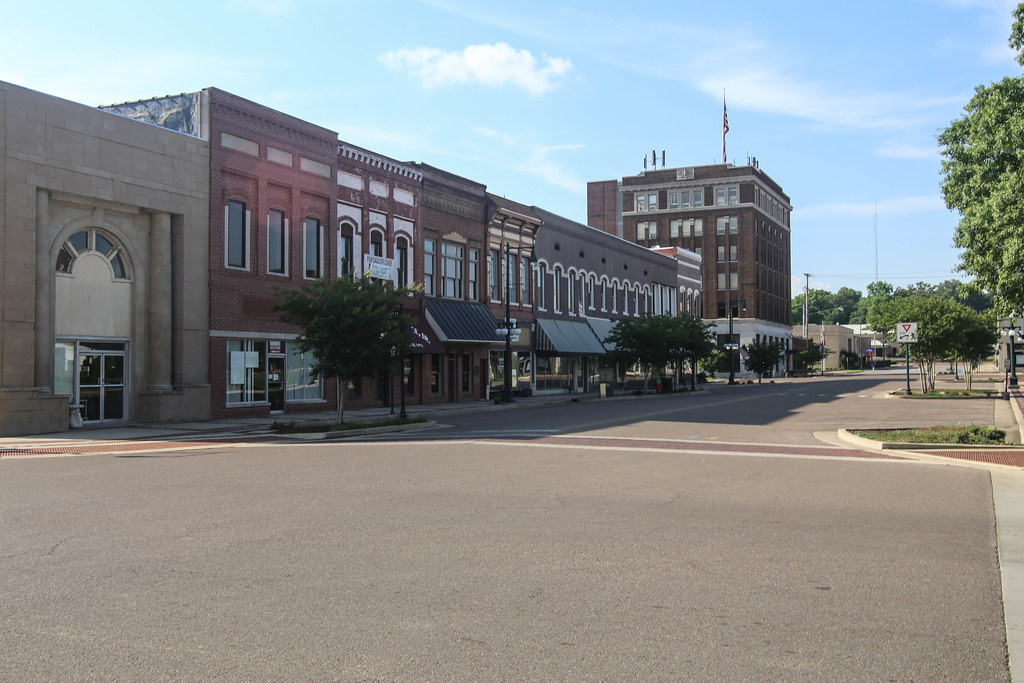
Dyersburg is a city located in Dyer County, Tennessee, United States, and serves as the county seat. Located in northwest Tennessee, 79 miles northeast of Memphis on the Forked Deer River, Dyersburg is a small but growing city that offers a marvelous standard of living for its residents.
With a population of 16,164 as of the 2020 census, Dyersburg has experienced a slight decrease in population since the 2010 census. The city is known for its beautiful natural surroundings, with the Forked Deer River providing numerous recreational opportunities.
Dyersburg is also home to a variety of cultural attractions, including the Dyersburg Regional Medical Center and the Dyer County Courthouse. Overall, Dyersburg is a charming and welcoming city that offers a winning combination of small-town character and natural beauty.
Franklin

Franklin is a city located in Williamson County, Tennessee, United States, and serves as the county seat. With a population of 83,454 as of 2020, Franklin is the seventh-largest city in Tennessee and one of the principal cities of the Nashville metropolitan area and Middle Tennessee. The city is known for being the home of many celebrities, mostly country music stars.
Franklin developed on both sides of the Harpeth River, a tributary of the Cumberland River, and in the 19th century, it was the trading and judicial center for primarily rural Williamson County. Despite recent growth and development, Franklin is noted for its many older buildings and neighborhoods, which are protected by city ordinances.
The city has experienced rapid growth since 1980, with areas of northern Franklin being developed for residential and related businesses, in addition to modern service industries. Overall, Franklin is a thriving city that offers a unique blend of history, culture, and modern amenities.
Gallatin

Gallatin is a city located in Sumner County, Tennessee, United States, and serves as the county seat. With a population of 44,431 as of the 2020 census, Gallatin has experienced significant growth since the 2010 census. Named after United States Secretary of the Treasury Albert Gallatin, the city was established on the Cumberland River and made the county seat of Sumner County in 1802.
Gallatin is located about 30.6 miles northeast of the state capital of Nashville, Tennessee. The city is home to several national companies, including Facebook, Gap, Inc., Beretta, and Servpro Industries, Inc. Gallatin was formerly the headquarters of Dot Records and is the site of Volunteer State Community College, a two-year college with more than 70 degree programs.
In 2017, Gallatin was ranked as “The Nicest Place In America” by Reader’s Digest, highlighting the city’s welcoming and friendly community. Overall, Gallatin is a prosperous city that offers a great experience for its residents and visitors alike.
Goodlettsville
Goodlettsville is a city located in both Davidson and Sumner counties, Tennessee. With a population of 17,789 as of 2020, Goodlettsville has experienced significant growth since its incorporation as a city in 1958 with just over 3,000 residents. The city is unique in that the northern half is in Sumner County, while the southern half is in Davidson County.
In 1963, when the city of Nashville merged with the government of Davidson County, Goodlettsville chose to remain autonomous. The city is known for its strong sense of community and delightful ambiance, with numerous parks, recreational facilities, and cultural attractions.
Goodlettsville is home to the Goodlettsville Antique District, which is a popular destination for antique collectors and enthusiasts. Goodlettsville will delight visitors and residents with its mix of culture, heritage, and natural beauty.
Greeneville
Greeneville is a town located in Greene County, Tennessee, United States, and serves as the county seat. With a population of 15,479 as of the 2020 census, Greeneville is the second oldest town in Tennessee and the only town with this spelling in the United States, although there are numerous U.S. towns named Greenville.
The town was named in honor of Revolutionary War hero Nathanael Greene and was the capital of the short-lived State of Franklin in the 18th-century history of East Tennessee. Greeneville is known for being the town where United States President Andrew Johnson began his political career when elected from his trade as a tailor.
He and his family lived there for most of his adult years, and it was an area of strong abolitionist and Unionist views and yeoman farmers, an environment that influenced Johnson’s outlook. The Greeneville Historic District was established in 1974, and the U.S. Navy Los Angeles-class submarine USS Greeneville was named in honor of the town.
Hendersonville
Hendersonville is the most populous city in Sumner County, Tennessee, located on Old Hickory Lake. With a population of 61,753 as of the 2020 census, Hendersonville is the fourth-most populous city in the Nashville metropolitan area and the 10th largest in Tennessee.
The city is located 18 miles northeast of downtown Nashville and was settled around 1784 by Daniel Smith, whose house Rock Castle, completed in 1796, is maintained as a historic site. Hendersonville is named for William Henderson, the first postmaster of the area. The city is known for being the home of numerous 20th-century musicians in the Nashville area, including Johnny Cash and his wife June Carter Cash, Roy Orbison, Conway Twitty, and Marty Stuart.
The city’s main road, Johnny Cash Parkway, is named for the late singer. Other notable past and present residents include Jean Shepard, Kelly Clarkson, Taylor Swift, Young Buck, and Chris Henderson of 3 Doors Down. Overall, Hendersonville is a vibrant and culturally rich city that offers a wonderful experience for all comers.
Jackson
Jackson is a city located in Madison County, Tennessee, United States, and serves as the county seat. With a population of 68,205 as of the 2020 United States Census, Jackson is a regional center of trade for West Tennessee and the primary city of the Jackson, Tennessee metropolitan area, which is included in the Jackson-Humboldt, Tennessee combined statistical area.
Jackson is also home to the Tennessee Supreme Court’s courthouse for West Tennessee, as it was the major city in the West when the court was established in 1834. In the antebellum era, Jackson was the market city for an agricultural area based on the cultivation of cotton, the major commodity crop.
Beginning in 1851, the city became a hub of railroad systems ultimately connecting to major markets in the north, south, east, and west, which was key to its development, attracting trade and many workers on the railroads in the late 19th century with the construction of railroads after the American Civil War.
The city’s economy has adjusted to new businesses, with major manufacturing in the area, after the loss of jobs due to industry restructuring in the 1960s. Overall, Jackson is a thriving city that offers a mix of history, culture, and modern amenities.
Johnson City
Johnson City is a city located in Washington, Carter, and Sullivan counties in the U.S. state of Tennessee, mostly in Washington County. With a population of 71,046 as of the 2020 United States census, Johnson City is the eighth-largest city in Tennessee. The city is the principal city of the Johnson City Metropolitan Statistical Area, which consists of Carter, Unicoi, and Washington counties, and had a population of 207,285 as of 2020.
The MSA is also a component of the Johnson City–Kingsport–Bristol, Tennessee–Virginia Combined Statistical Area, commonly known as the “Tri-Cities” region. This CSA is the fifth-largest in Tennessee with a population of 514,899 as of 2020. Johnson City is known for its vibrant downtown area, which features a variety of shops, restaurants, and cultural attractions.
The city is also home to East Tennessee State University, which is a major employer in the area and offers a wide range of academic programs. Overall, Johnson City is a growing destination that provides a rewarding quality of life for residents and visitors alike.
Kingsport
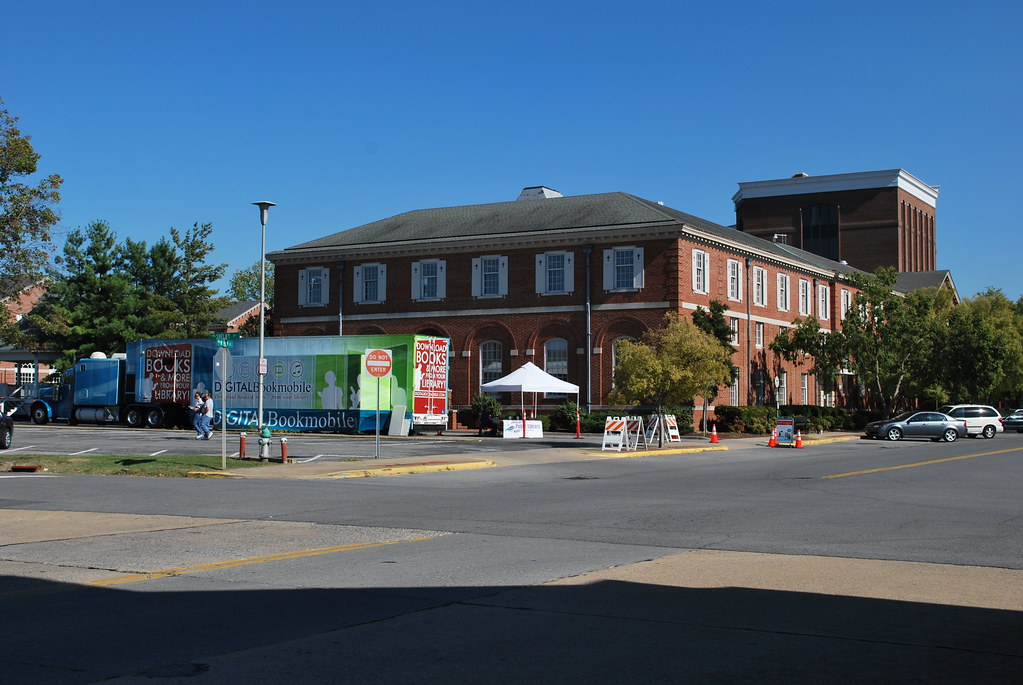
Kingsport is a city located in Sullivan and Hawkins counties in the U.S. state of Tennessee. With a population of 55,442 as of the 2020 census, Kingsport is the largest city in the Kingsport–Bristol metropolitan area, which had a population of 307,614 in 2020. The metro area is a component of the larger Tri-Cities region of Tennessee and Virginia, with a population of 508,260 in 2020.
Lying along the Holston River, Kingsport is commonly included in what is known as the Mountain Empire, which spans a portion of southwest Virginia and the mountainous counties in northeastern Tennessee. The name “Kingsport” is a simplification of “King’s Port”, originally referring to the area on the Holston River known as King’s Boat Yard, the head of navigation for the Tennessee Valley.
Kingsport is known for its exciting history and culture, which is reflected in its numerous museums, art galleries, and cultural events. The city is also home to a prosperous business community, with a diverse range of industries including healthcare, manufacturing, and technology.
Knoxville
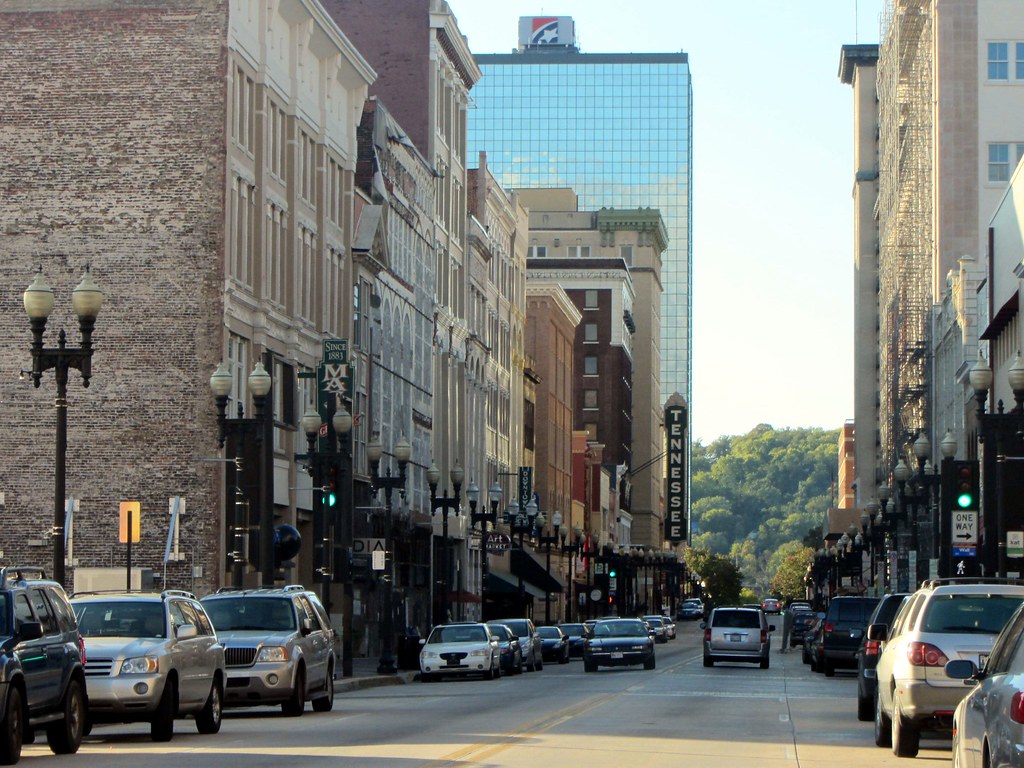
Knoxville is a city located in Knox County, Tennessee, United States, and serves as the county seat. With a population of 190,740 as of the 2020 United States census, Knoxville is the largest city in the East Tennessee Grand Division and the state’s third-largest city after Nashville and Memphis. The city is the principal city of the Knoxville metropolitan area, which had a population of 879,773 in 2020.
First settled in 1786, Knoxville was the first capital of Tennessee. The city struggled with geographic isolation throughout the early 19th century, but the arrival of the railroad in 1855 led to an economic boom. The city was bitterly divided over the issue of secession during the American Civil War and was occupied alternately by Confederate and Union armies, culminating in the Battle of Fort Sanders in 1863.
Following the war, Knoxville grew rapidly as a major wholesaling and manufacturing center. Hosting the 1982 World’s Fair helped reinvigorate the city, and revitalization initiatives by city leaders and private developers have had major successes in spurring growth in the city, especially the downtown area. Knoxville is also home to the flagship campus of the University of Tennessee, the headquarters of the Tennessee Valley Authority, and the Tennessee Supreme Court’s courthouse for East Tennessee.
As one of the largest cities in the Appalachian region, Knoxville has positioned itself in recent years as a repository of Appalachian culture and is one of the gateways to the Great Smoky Mountains National Park. Overall, Knoxville is a vibrant and dynamic city that offers a great quality of life for its residents and visitors alike.
La Vergne

La Vergne is a city located in Rutherford County, Tennessee, United States. With a population of 38,719 as of the 2020 census, La Vergne is a bustling city that lies within the Nashville Metropolitan Statistical Area. The city is known for its diverse economy, which includes manufacturing, distribution, and retail operations.
La Vergne is home to several major employers, including Ingram Content Group, which is the world’s largest distributor of books, music, and media products. The city is also home to a number of parks and recreational areas, which offer residents and visitors a variety of outdoor activities. Overall, La Vergne is a lively city that offers a marvelous standard of living.
Lawrenceburg
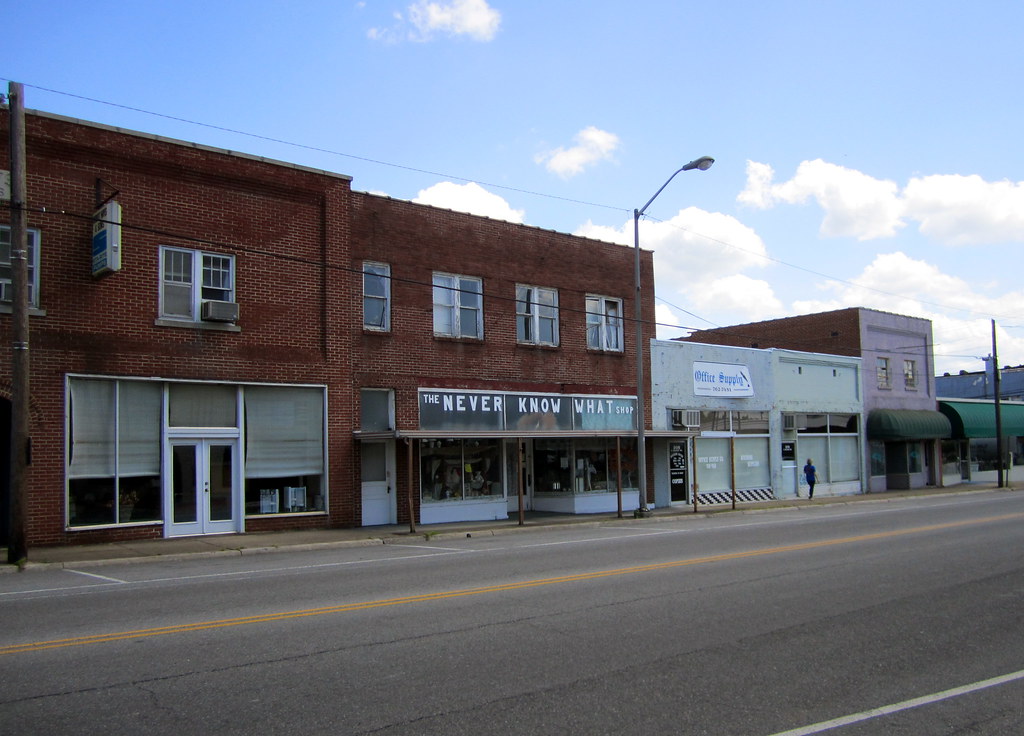
Lawrenceburg is a city located in Lawrence County, Tennessee, United States, and serves as the county seat. With a population of 11,633 as of the 2020 United States Census, Lawrenceburg is the largest city on the state’s southern border between Chattanooga and Memphis. The city is named after the War of 1812 American Navy officer James Lawrence and lies on the banks of Shoal Creek.
Located around 80 miles (130 km) southwest of Nashville at the junction of U.S. Routes 43 and 64, Lawrenceburg is called the “Crossroads of Dixie.” The city is known for its rich history and culture, which is reflected in its range of museums, art galleries, and cultural events.
Lawrenceburg is also home to a thriving business community, with a diverse range of industries including healthcare, manufacturing, and agriculture. The city’s location at the crossroads of major highways makes it an important transportation hub for the region.
Lebanon

Lebanon is a city located in Wilson County, Tennessee, United States, and serves as the county seat. With a population of 38,431 as of the 2020 census, Lebanon is a burgeoning city that is located in Middle Tennessee, approximately 25 miles (40 km) east of downtown Nashville.
The city is part of the Nashville Metropolitan Statistical Area and is known for its historic downtown area, which features a variety of shops, restaurants, and cultural attractions. Lebanon is also home to Cumberland University, which is a major employer in the area and offers a wide range of academic programs.
The city’s location near Nashville makes it an important transportation hub for the region, with easy access to major highways and airports. Overall, Lebanon is a vivacious and energetic city that offers a great experience for its residents and visitors.
Lewisburg
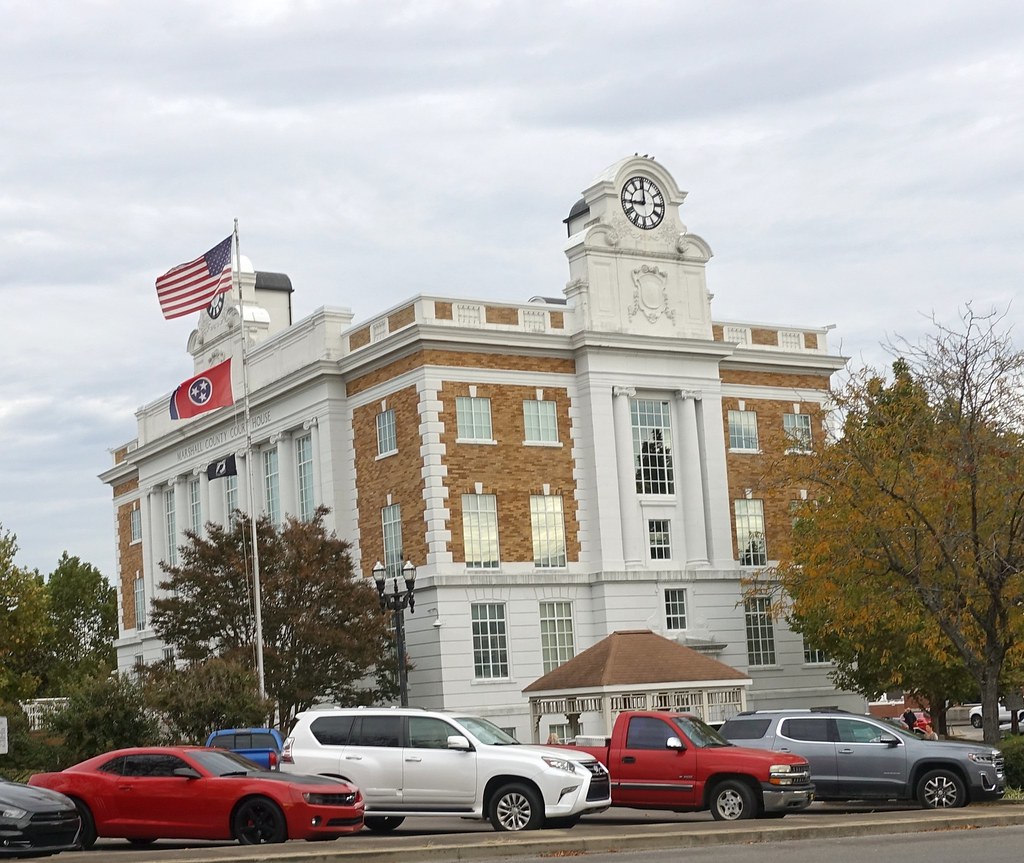
Lewisburg is a city located in Marshall County, Tennessee, United States, and serves as the county seat. With a population of 12,288 as of the 2020 census, Lewisburg is a growing city that is located in Middle Tennessee, fifty miles south of Nashville and fifty-two miles north of Huntsville, Alabama.
The city is known for its beautiful rolling hills and was named after the explorer Meriwether Lewis. By 1838, the town was supporting a newspaper and a bank, and today the downtown area features a courthouse on a square, surrounded by retail and commercial businesses.
Shopping centers are located on the east and west ends of town, providing residents with easy access to a variety of shopping and dining options. Lewisburg’s location near major highways makes it a vital transportation hub for the region, with convenient access to nearby cities like Nashville and Huntsville.
Maryville

Maryville is a city located in Blount County, Tennessee, United States, and serves as the county seat. With a population of 31,907 as of the 2020 census, Maryville is a growing city that is known for its beautiful natural surroundings and rich history.
The city is home to a number of parks and recreational areas, including the Great Smoky Mountains National Park, which is located just a short drive away. Maryville is also known for its buzzing downtown area, which features a variety of shops, restaurants, and cultural attractions.
The city’s location near major highways and airports makes it a key transportation hub for the region, with easy access to nearby cities like Knoxville and Chattanooga. Overall, Maryville is a charming city that offers a wonderful experience for its residents and visitors.
Morristown
Morristown is a city located in Hamblen County, Tennessee, United States, and serves as the county seat. The city also extends into Jefferson County on the western and southern ends and lies within the Ridge and Valley of the Appalachians. With a population of 30,431 as of the 2020 United States census, Morristown is a bustling community that has a fascinating history.
Established in 1855, the city developed into a major transportation hub due to its strategic location at the intersection of two major stagecoach routes. The city played a significant role in the Civil War and experienced turmoil from battles in its immediate area and its change of control under Union and Confederate forces. Following the war, Morristown furthered its industrial growth with companies expanding rail access, making it a prominent logistics hub into the 20th century.
Since the mid-20th century, the city has established itself as the regional economic hub and metropolis of the Lakeway Area region following efforts to expand the industrial sector of the city’s economy into a market with over 100 companies, providing a workforce of an estimated 30,000 people.
In 2019, the city was reported to have a daytime population of 118,600, including those commuting to the city from surrounding counties and towns. Overall, Morristown is a prosperous city that offers a welcoming sense of community for its inhabitants and tourists alike.
Murfreesboro
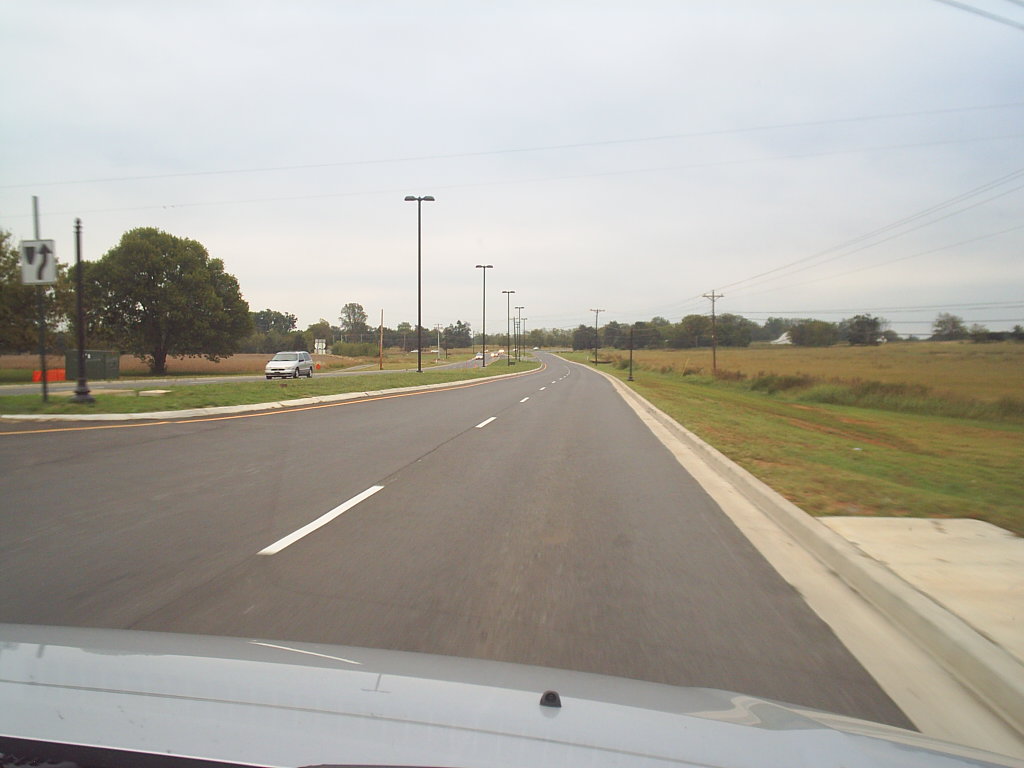
Murfreesboro is a city located in Rutherford County, Tennessee, United States, and serves as the county seat. With a population of 152,769 according to the 2020 census, Murfreesboro is a rapidly growing city that is located in the Nashville metropolitan area of Middle Tennessee, 34 miles (55 km) southeast of downtown Nashville.
Serving as the state capital from 1818 to 1826, it was superseded by Nashville. Today, it is the largest suburb of Nashville and the sixth-largest city in Tennessee. The city is both the center of population and the geographic center of Tennessee. Since the 1990s, Murfreesboro has been Tennessee’s fastest-growing major city and one of the fastest-growing cities in the country.
Murfreesboro is home to Middle Tennessee State University, the largest undergraduate university in the state of Tennessee, with 22,729 total students as of fall 2014. The city is known for its vibrant downtown area, which features a variety of shops, restaurants, and cultural attractions.
Nashville
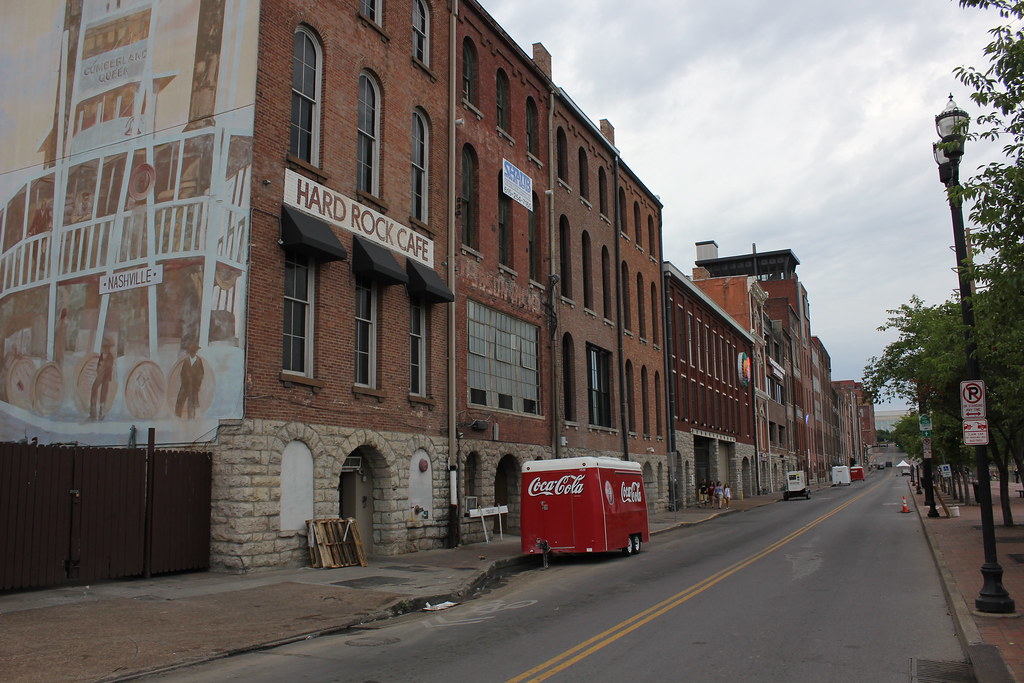
Nashville is the capital and most populous city of the U.S. state of Tennessee, as well as the seat of Davidson County. With a population of 689,447 at the 2020 U.S. census, Nashville is the 21st most populous city in the United States, and the fourth most populous city in the southeastern U.S. Located on the Cumberland River, the city is the center of the Nashville metropolitan area, and is one of the fastest growing in the nation.
Named for Francis Nash, a general of the Continental Army during the American Revolutionary War, the city was founded in 1779 and grew quickly due to its strategic location as a port on the Cumberland River and, in the 19th century, a railroad center. Nashville is considered a global city type “Gamma” by the GaWC as of 2020 and is commonly known as “Music City” due to its status as a major center for the music industry, especially country music.
The city is also home to many colleges and universities, including Tennessee State University, Vanderbilt University, Belmont University, Fisk University, Trevecca Nazarene University, and Lipscomb University. Nashville is sometimes referred to as the “Athens of the South” due to the large number of educational institutions.
The city is also a major center for the healthcare, publishing, banking, automotive, and technology industries, with many major corporations headquartered in the area. Overall, Nashville is a dynamic destination full of culture, technology, and growth.
Shelbyville

Shelbyville is a city located in Bedford County, Tennessee, United States, and serves as the county seat. The town was laid out in 1810 and incorporated in 1819. With a population of 20,335 residents at the 2010 census, Shelbyville is a charming and historic city that has a rich cultural heritage.
The town is known for being a hub of the Tennessee Walking Horse industry and has been nicknamed “The Walking Horse Capital of the World”. The annual Tennessee Walking Horse National Celebration is held in Shelbyville each year, drawing visitors from all over the world to see the best of the breed compete.
In addition to its equestrian heritage, Shelbyville is also home to a number of historic sites and cultural attractions, including the historic downtown area, which features a variety of shops, restaurants, and exciting cultural events throughout the year.
Smyrna
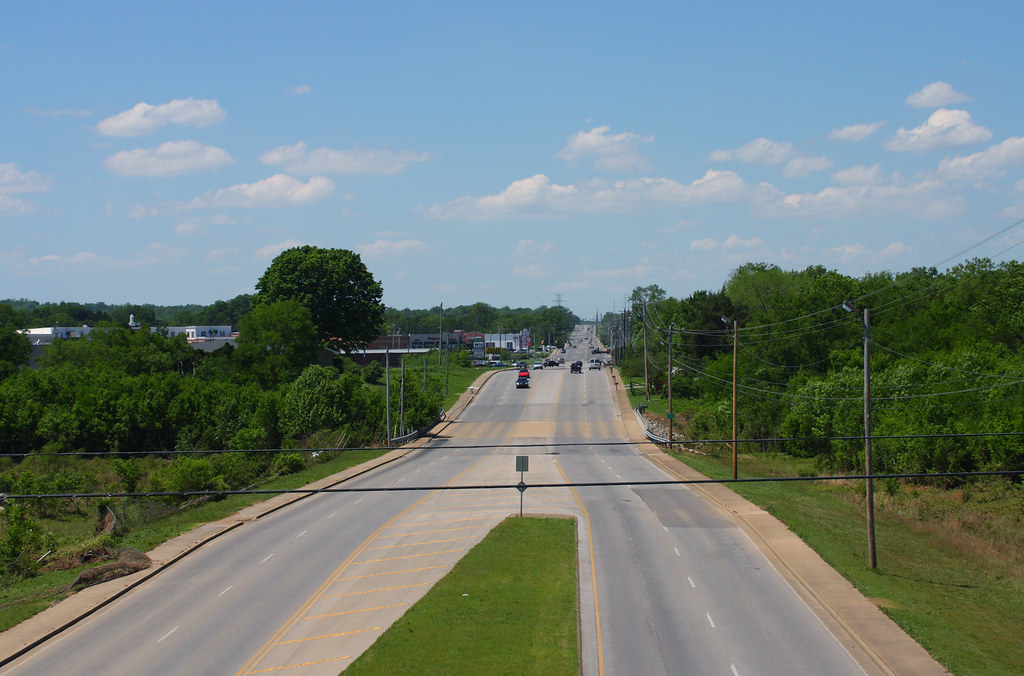
Smyrna is a town located in Rutherford County, Tennessee, United States. With a population of 53,070 residents at the 2020 census, Smyrna is the largest town in Tennessee by population in that census. The town is known for its welcoming community, excellent schools, and affordable cost of living.
In 2007, U.S. News & World Report listed Smyrna as one of the best places in the United States to retire, citing its low crime rate, mild climate, and abundance of recreational opportunities. Smyrna is part of the Nashville metropolitan statistical area, which is one of the fastest-growing regions in the country.
The town is home to a number of major employers, including Nissan North America, which has a large manufacturing plant in the area. Smyrna is also known for its vibrant downtown area, which features a wonderful array of shops, restaurants, and cultural attractions.
Springfield
Springfield is a city located in Robertson County, Tennessee, United States, and serves as the county seat. It is located in Middle Tennessee near the northern border of the state. With a population of 18,782 residents at the 2020 census, Springfield is a charming and historic city that has a rich cultural heritage.
The city is known for its beautiful historic downtown area, which features a variety of shops, restaurants, and cultural attractions. Springfield is also home to a number of historic sites and landmarks, including the Robertson County Courthouse, which was built in 1879 and is listed on the National Register of Historic Places.
The city is also known for its excellent schools and family-friendly community. Overall, Springfield is a great place to live, work, and raise a family, offering a high quality of life and a strong sense of community.
Union City
Union City is a town located in Obion County, Tennessee, United States. As of the 2020 census, the population of Union City was 11,170 people. It is the principal urban settlement of the surrounding micropolitan area, which includes Obion County and Fulton County, Kentucky.
Union City is home to Discovery Park of America, which is a world-renowned encyclopedic museum that features many exhibits pertaining to local history, as well as state, national, and world history, science, technology, and art. The museum is a popular attraction for visitors to the area and is known for its interactive exhibits and engaging educational programs.
In addition to its cultural attractions, Union City is also a hub of commerce and industry in the region, with a number of major employers located in the area. Overall, Union City is a dynamic and growing town that offers a great quality of life for its residents and visitors alike, with a rich cultural heritage and a robust sense of community.
Interstates
Interstate 65

Interstate 65 (I-65) is a major highway that runs through the middle portion of Tennessee, from Ardmore at the Alabama border to the Kentucky border near Portland. The route serves the state capital and largest city of Nashville, along with many of its suburbs. Outside of urban areas, the Interstate bypasses most cities and towns that it serves, instead providing access via state and U.S. Highways.
I-65 is often used as the dividing line between the eastern and western portions of the former. The Interstate was completed between Nashville and the Alabama state line in 1967, and the final section, located in Nashville, opened in 1973.
Since its completion, the rapid growth of the Nashville metropolitan area, as well as the general increase in traffic, has necessitated many widening and reconstruction projects. Overall, I-65 is an important transportation artery in Tennessee, providing a vital link between major cities and regions of the state.
Interstate 75
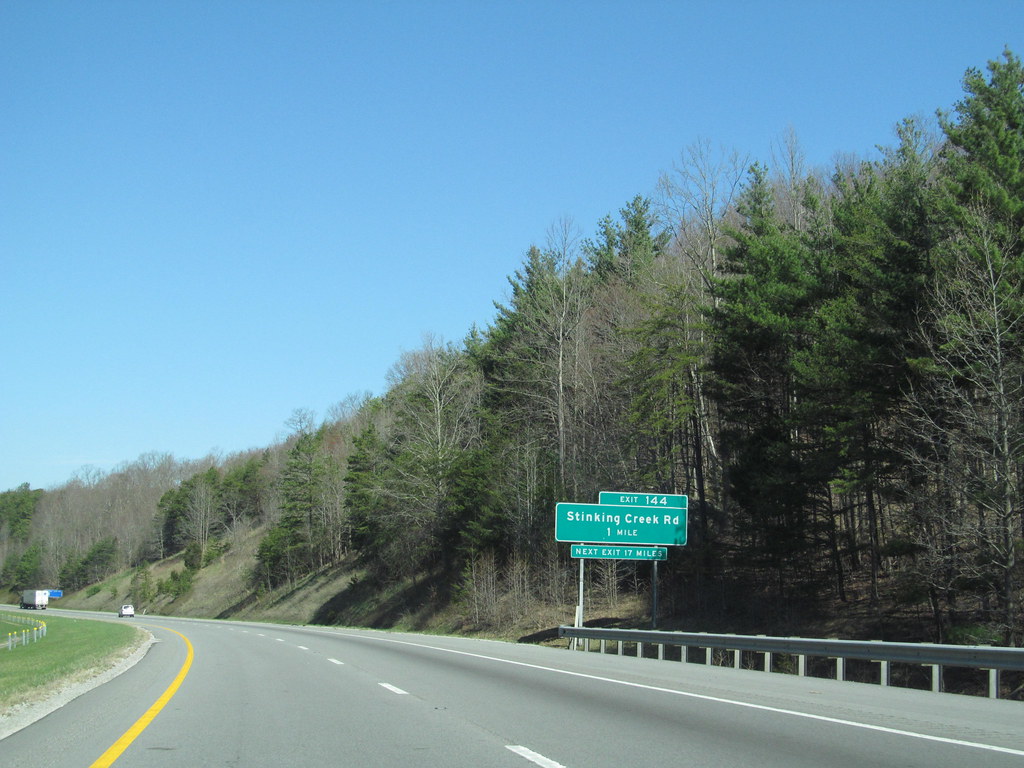
Interstate 75 (I-75) is an important highway in the state of Tennessee, running from Chattanooga to Jellico by way of Knoxville. The route enters the East Tennessee region from Georgia, following the Tennessee Valley all the way through Knoxville to near Rocky Top, then climbs into the Cumberland Mountains before crossing over into Kentucky at Jellico.
Of the six states that I-75 traverses, the segment in Tennessee is the shortest, at 161.86 miles (260.49 km). The highway follows the route of US 11 between Chattanooga and Knoxville, and US 25W between Knoxville and Kentucky. I-75 is a key transportation artery in Tennessee, providing a vital link between major cities and regions of the state, as well as connecting Tennessee to other states in the southeastern United States.
Interstate 81
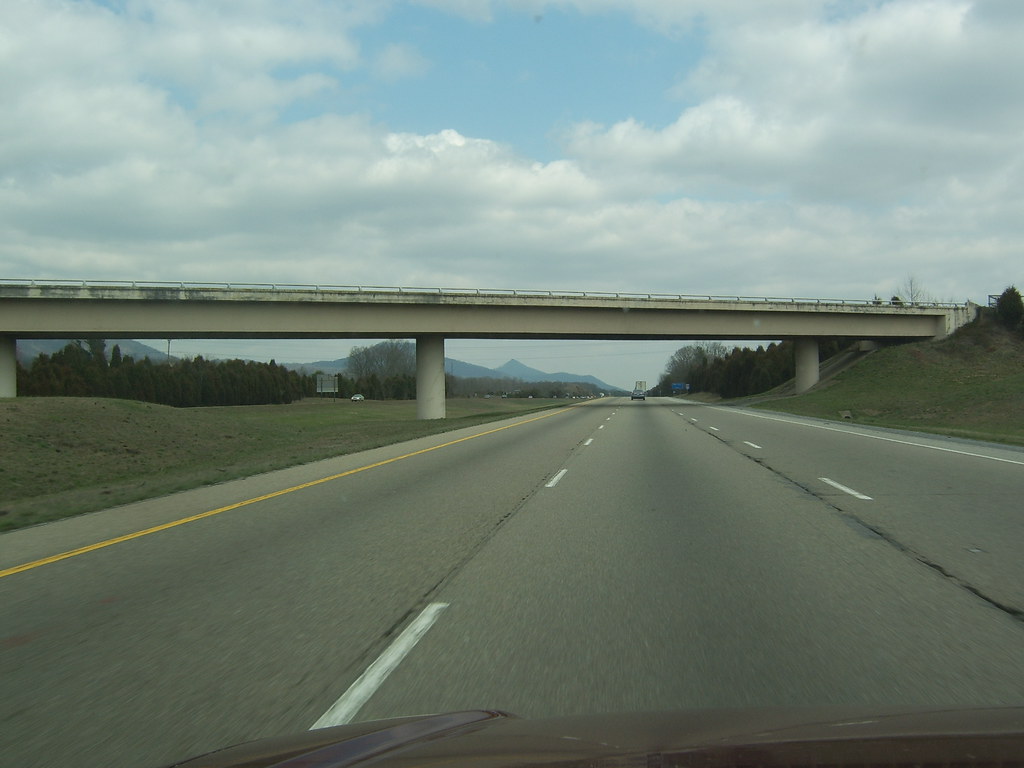
Interstate 81 (I-81) is an important highway that serves the northeastern part of Tennessee, running 75.66 miles (121.76 km) from its southern terminus with I-40 in Dandridge to the Virginia state line in Bristol. The route serves the Tri-Cities region of the state and the eastern parts of the Knoxville metropolitan area, terminating about 35 miles (56 km) east of Knoxville.
I-81 bypasses most cities that it serves, instead providing access via interchanges with state and federal routes. It remains in the Ridge-and-Valley topographic region of the Appalachian Mountains for its entire length in Tennessee and runs in a northeast-to-southwest direction.
I-81 roughly follows the corridors of U.S. Routes 11E and 11W in Tennessee, but unlike many stretches of Interstate Highways, does not closely parallel any U.S. Numbered Highway until it reaches Bristol. Overall, I-81 is an important transportation channel in Tennessee, providing a chief link between major cities and regions of the state, as well as connecting Tennessee to other states in the northeastern United States.
Interstate 24
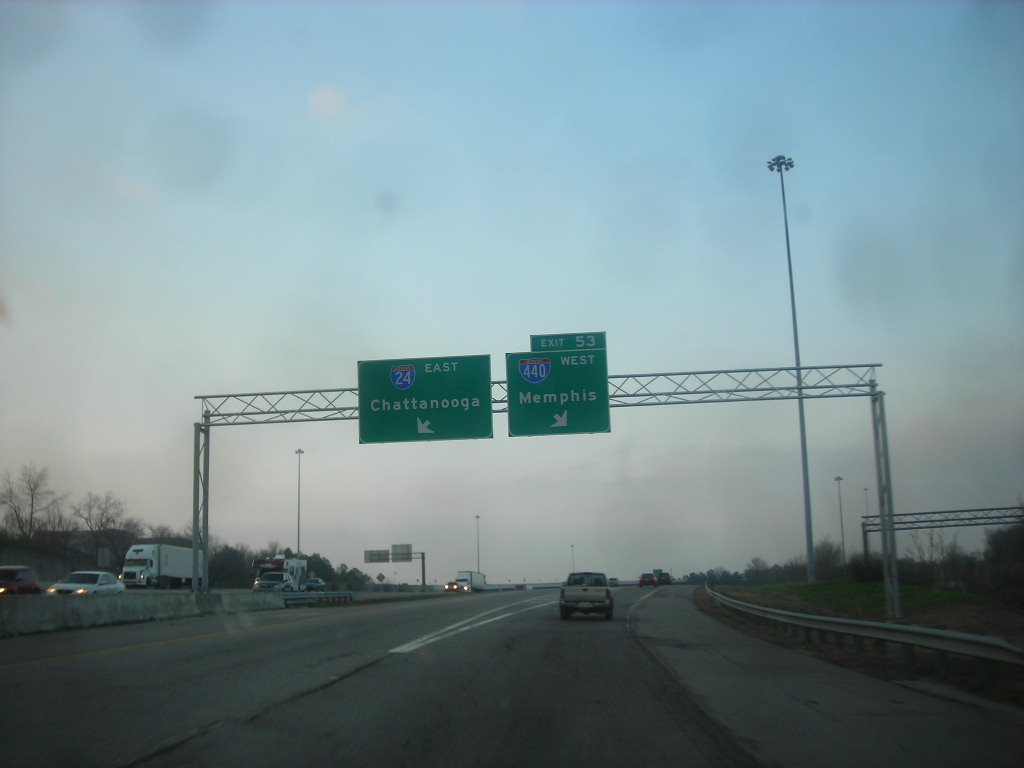
Interstate 24 (I-24) runs diagonally from I-57, 10 miles (16 km) south of Marion, Illinois, to Chattanooga, Tennessee, at I-75. It travels through Illinois, Kentucky, Tennessee, and Georgia. As an even-numbered Interstate, it is signed as an east–west route, though the route follows a more southeast–northwest routing, passing through Nashville, Tennessee.
The numbering deviates from the standard Interstate Highway System grid, lying further north than its number would indicate west of Nashville. The short segment within Georgia bears the unsigned designation State Route 409 (SR 409). The stretch of I-24 across the Cumberland Plateau, commonly known as “Monteagle Mountain”, is considered one of the most hazardous stretches of highway in the US, particularly for trucks, due to its steep descents, which measure a maximum of six-percent grade.
Overall, I-24 is a principal transportation artery in Tennessee, providing a vital channel between major cities and regions of the state, as well as connecting Tennessee to other states in the Midwestern and Southeastern United States.
Interstate 40

Interstate 40 (I-40) is an important highway that crosses Tennessee from west to east, from the Mississippi River at the Arkansas border to the Blue Ridge Mountains at the North Carolina border. At 455.28 miles (732.70 km), the Tennessee segment of I-40 is the longest of the eight states through which it passes and the state’s longest Interstate Highway.
The route passes through Tennessee’s three largest cities—Memphis, Nashville, and Knoxville—and serves the Great Smoky Mountains National Park, the most-visited national park in the United States. The Interstate parallels the older U.S. Route 70 (US 70) corridor for its entire length in the state, has interchanges and concurrencies with four other mainline Interstate Highways, and has five auxiliary routes: I-140, I-240, I-440, I-640, and I-840.
Overall, I-40 is a key transportation artery in Tennessee, providing a vital link between major cities and regions of the state, as well as connecting Tennessee to other states in the western and eastern United States.
Highways
Route 11
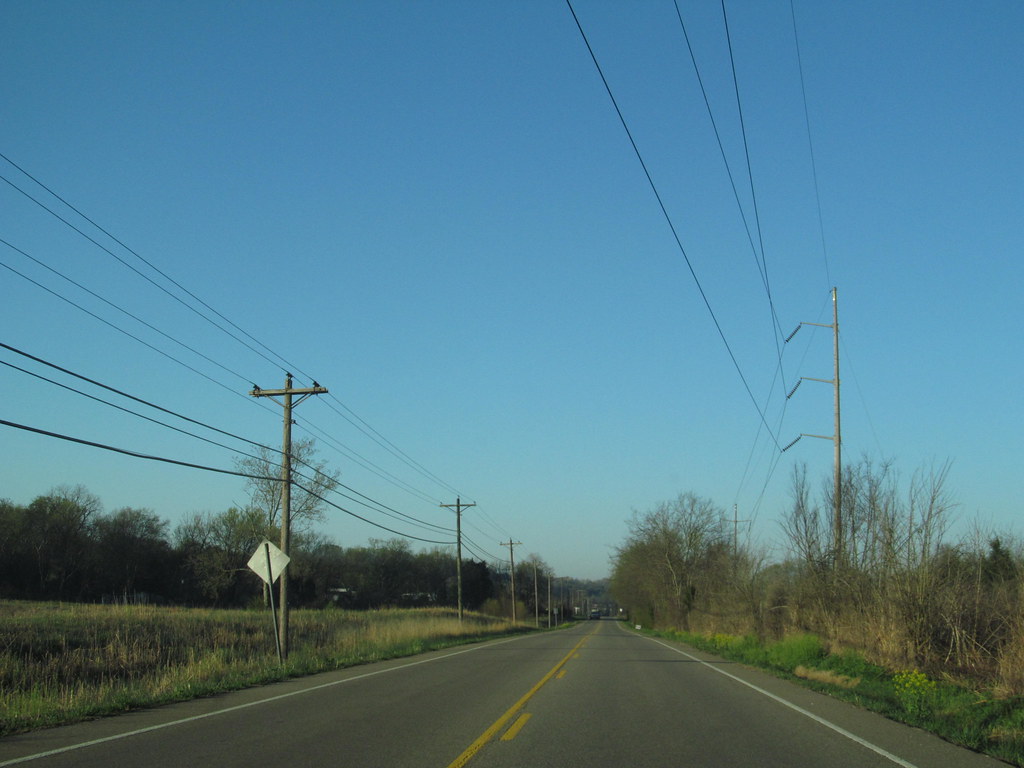
U.S. Route 11 (US 11) is an important highway in the state of Tennessee, running from the Georgia state line in Chattanooga to Knoxville, where it then splits into US 11E and US 11W. These two highways then travel to the Virginia state line near Kingsport and Bristol. Along its length, US 11 shares concurrencies with State Route 2 (SR 2) and SR 38.
The route is a key transportation artery in Tennessee, providing a vital link between major cities and regions of the state, as well as connecting Tennessee to other states in the southeastern United States. Overall, US 11 is a tremendous part of the state’s highway network, serving both local and regional traffic needs.
Route 23
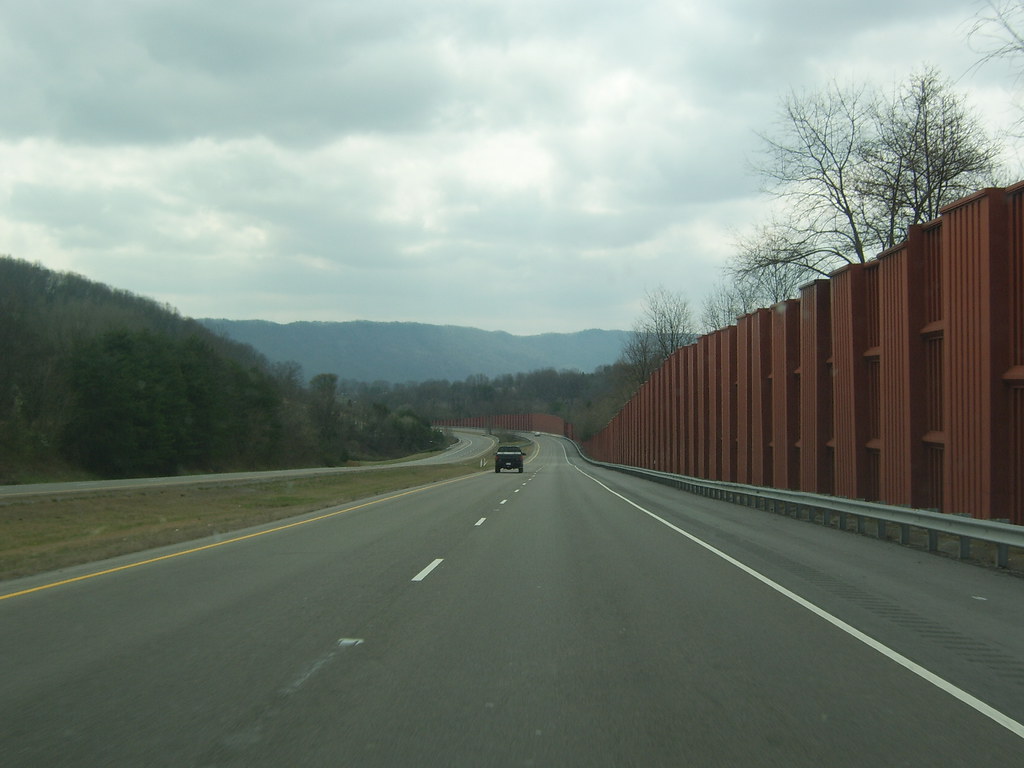
U.S. Route 23 (US 23) is an important highway in the northeastern part of Tennessee, running 57.5 miles (92.5 km) from the North Carolina state line at Sam’s Gap in the Bald Mountains, north to the Virginia state line in Kingsport. With a predominant concurrency with Interstate 26 (I-26), US 23 is a divided four-lane freeway that follows Corridor B of the Appalachian Development Highway System (ADHS) and serves as a major thoroughfare in the Tri-Cities.
Although I-26 is technically an east–west route, the highway predominantly travels in a north–south alignment in Tennessee. The route reaches a maximum elevation of 3,760 feet (1,150 m) at the North Carolina state line, which is the highest elevation on the Interstate Highway System east of the Mississippi River.
The freeway was first authorized by the Appalachian Regional Development Act of 1965, which created the ADHS, and the stretch between Johnson City and the Virginia state line was constructed in segments between 1968 and 1986. Overall, US 23 is a significant part of the state’s highway network, serving both local and regional traffic needs.
Route 27

U.S. Route 27 (US 27) is an important highway that runs from the Georgia state line in Chattanooga to the Kentucky state line in Isham, passing through several cities and towns along the way. It forms the informal border between the Eastern and Central Time Zones of the state, but it stays in the Eastern Time Zone.
The route is a chief transportation artery in Tennessee, providing a vital link between major cities and regions of the state, as well as connecting Tennessee to other states in the southeastern United States. Overall, US 27 is a principal part of the state’s highway network, serving both local and regional traffic needs.
Route 31

U.S. Route 31 (US 31) is an important highway that runs through Tennessee as part of the United States Numbered Highway System. It runs concurrently with Interstate 65 (I-65) for the first mile northward from the Tennessee state line. There, US 31 parallels I-65 to downtown Nashville, passing through several cities and towns along the way.
At Pulaski, US 31 meets the southern terminus of US 31A in Tennessee. US 31 continues due north through Lynnville, Columbia, Spring Hill, Franklin, and Brentwood to Nashville. The route splits into US 31E and US 31W in Nashville and goes into Kentucky.
Overall, US 31 is a chief part of the state’s highway network, serving both local and regional traffic needs and providing a vital link between major cities and regions of the state, as well as connecting Tennessee to other states in the southeastern United States.
Route 41

U.S. Route 41 (US 41) runs through Tennessee as part of the United States Numbered Highway System. It is a major north-south route that runs from Miami, Florida, to Copper Harbor, Michigan. However, in Tennessee, the highway has largely been supplanted by Interstate 24, which parallels US 41 all the way from Georgia to Kentucky.
I-24 has become the preferred route for large and heavy vehicles, such as tractor-trailer trucks and buses, due to its wider lanes and higher speed limits. Despite this, US 41 still serves as an important local and regional route in Tennessee, passing through several cities and towns along the way.
Overall, US 41 is a principal part of the state’s highway network, providing a vital link between major cities and regions of the state, as well as connecting Tennessee to other states in the southeastern United States.
Route 45
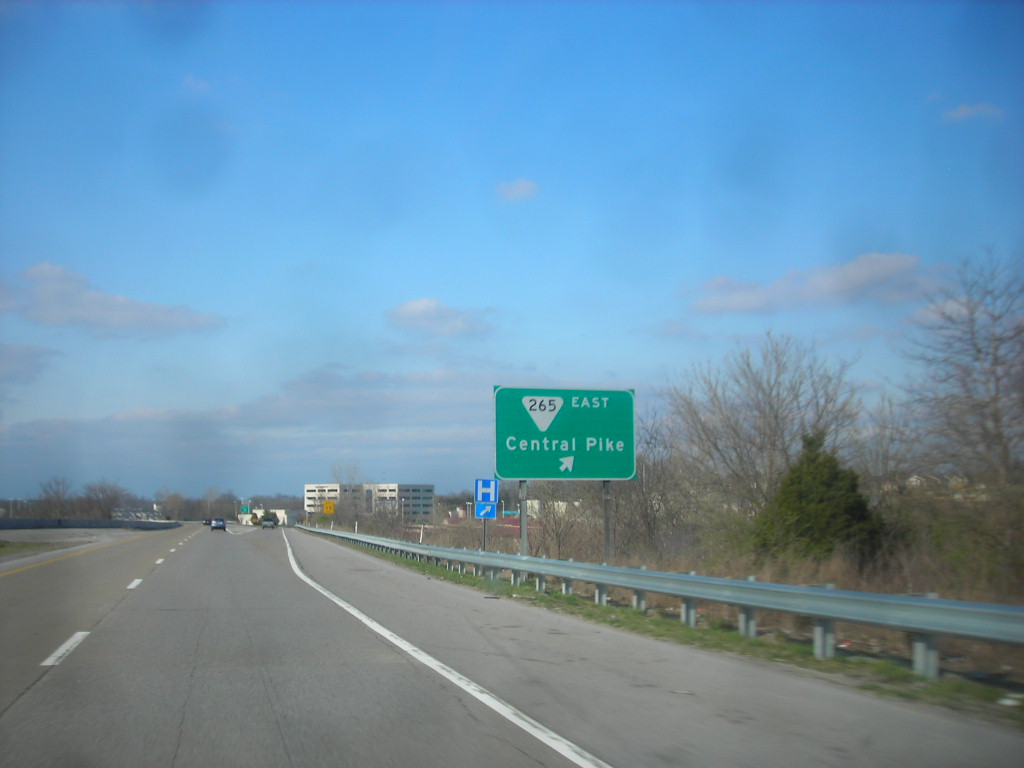
U.S. Route 45 (US 45) runs through West Tennessee as part of the United States Numbered Highway System. It extends from the Mississippi state line to the Kentucky state line, passing through several cities and towns along the way, including Selmer, Henderson, Jackson, and South Fulton.
Between Three Way and South Fulton, the highway is split into US 45W and US 45E. US 45 is an important transportation artery in West Tennessee, providing a vital link between major cities and regions of the state, as well as connecting Tennessee to other states in the southern United States. Overall, US 45 is a significant part of the state’s highway network, serving both local and regional traffic needs.
Route 51

U.S. Route 51 (US 51) is an important north-south state highway in West Tennessee, running 135.9 miles (218.71 km) from Shelby County to Obion County. The highway is mostly overlapped by the unsigned State Route 3 (SR 3), which is seen largely on mileposts.
US 51 and SR 3 differ in two places: in Memphis, where US 51 has been moved to Danny Thomas Boulevard (State Route 1 / State Route 4), while SR 3 remains on the one-way pair of 2nd and 3rd Streets, and in South Fulton, where US 51 crosses the state line on State Route 215 to the Purchase Parkway, while SR 3 remains on the old road, now U.S. Route 45.
US 51 provides a vital link between major cities and regions of the state, as well as connecting Tennessee to other states in the southern United States. Overall, US 51 is an important part of the state’s highway network, serving both local and regional traffic needs.
Route 64
U.S. Route 64 (US 64) is an important highway that runs through Tennessee as part of the United States Numbered Highway System. It stretches 404.1 miles (650.3 km) from the Mississippi River (Arkansas state line) in Memphis to the North Carolina state line near Ducktown.
The highway is a major route for travel between Memphis and Chattanooga, along with US 72. US 64 passes through several cities and towns along the way, providing a vital link between major cities and regions of the state, as well as connecting Tennessee to other states in the southeastern United States. Overall, US 64 is a key part of the state’s highway network, serving both local and regional traffic needs.
Route 70

U.S. Route 70 (US 70) runs through Tennessee as part of the United States Numbered Highway System. It enters the state from Arkansas via the Memphis & Arkansas Bridge in Memphis and runs west to east across 21 counties in all three Grand Divisions of Tennessee, with a total length of 478.48 miles (770.04 km), ending at the North Carolina state line in eastern Cocke County.
Along the route, US 70 is accompanied by various U.S. and state highways, including those in three of the state’s four major cities, such as Memphis, Nashville, and Knoxville. US 70 passes through several cities and towns along the way, providing a vital link between major cities and regions of the state, as well as connecting Tennessee to other states in the southeastern United States. Overall, US 70 is an important part of the state’s highway network, serving both local and regional traffic needs.
Route 79

U.S. Route 79 (US 79) runs through Tennessee as part of the United States Numbered Highway System. It enters the state from Arkansas via the Memphis & Arkansas Bridge in Memphis and runs northeast through western and the northwestern portions of middle Tennessee, before leaving the state into Kentucky northeast of Clarksville.
Along the route, US 79 is accompanied by several concurrencies, including hidden designations, throughout its alignment in Tennessee. US 79 passes through several cities and towns along the way, providing a vital link between major cities and regions of the state, as well as connecting Tennessee to other states in the southeastern United States. Overall, US 79 is an important part of the state’s highway network, serving both local and regional traffic needs.
Route 127
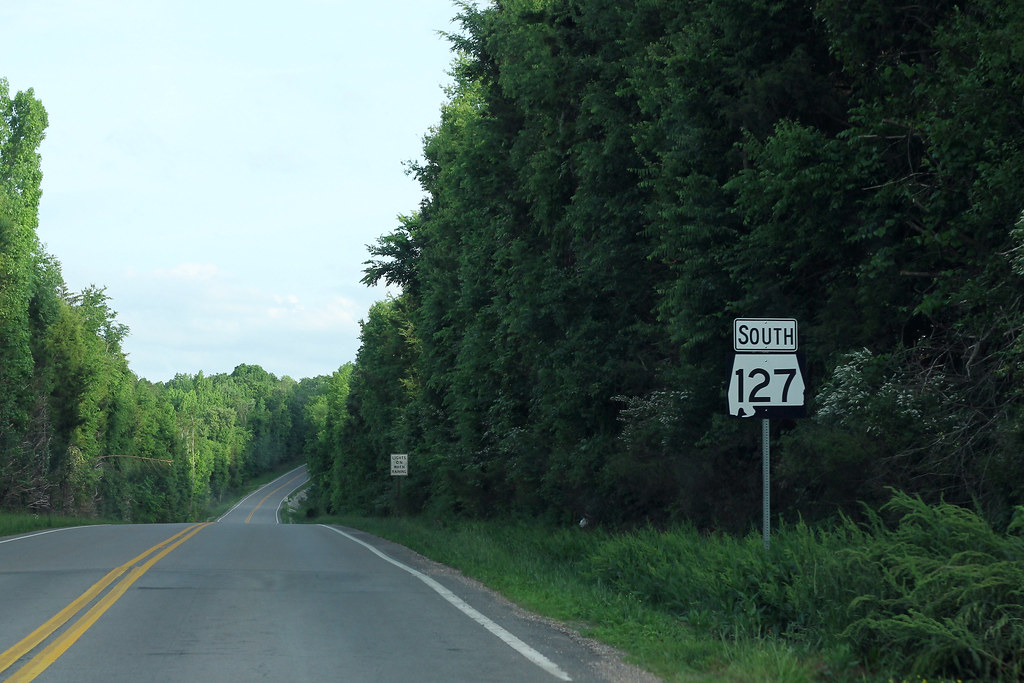
U.S. Route 127 (US 127) is an important highway that runs through Tennessee as part of the United States Numbered Highway System. It stretches 129.5 miles (208.4 km) from Chattanooga to the Kentucky state line at Static, passing through several cities and towns along the way, including Dunlap, Pikeville, Crossville, and Jamestown.
Throughout its length, US 127 straddles the line between East Tennessee and Middle Tennessee, providing a vital link between major cities and regions of the state, as well as connecting Tennessee to other states in the southeastern United States. Overall, US 127 is a key part of the state’s highway network, serving both local and regional traffic needs.
Route 129

U.S. Route 129 (US 129) is an important north-south highway that runs through East Tennessee as part of the United States Numbered Highway System. It runs for 52.8 miles (85.0 km) from the North Carolina state line near Tapoco to Knoxville, completely overlapped by unsigned State Route 115 (SR 115). In the Greater Knoxville area, US 129 serves as a six-lane controlled-access highway known as Alcoa Highway.
US 129 passes through several cities and towns along the way, providing a vital link between major cities and regions of the state, as well as connecting Tennessee to other states in the southeastern United States. Overall, US 129 is a chief part of the state’s highway network, serving both local and regional traffic needs.
Route 176
U.S. Route 176 (SR 176) runs through Tennessee, connecting Interstate 240 (I-240) to the Mississippi state line. The state highway portion varies between two and three lanes on each side, but the portion between Knight Arnold Road and Winchester Road is built as a four-lane freeway, with a wide median and grade-separated interchanges at major routes.
This portion of the highway is more commonly known as Getwell Road or New Getwell Road, with old sections named Old Getwell Road. The speed limit on SR 176 is 40 mph (64 km/h). Overall, SR 176 is an important part of the state’s highway network, serving both local and regional traffic needs in the Memphis metropolitan area.

